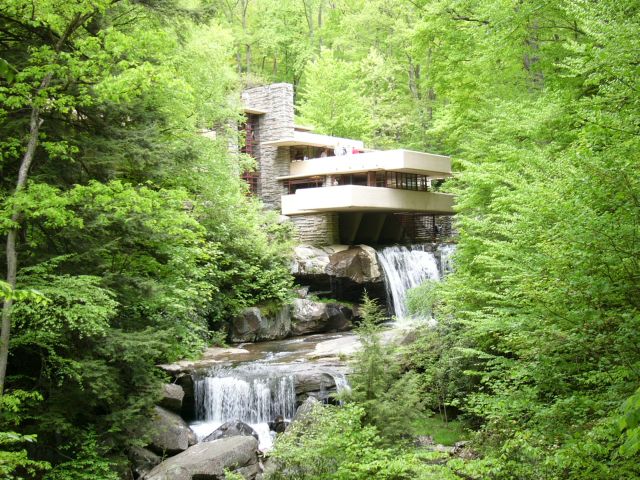What is Organic Architecture?
What is Organic Architecture?

The term "Organic Architecture" was invented by the great architect, Frank Lloyd Wright (1867-1959). An architecture idea which promotes harmony between man-made structure and the nature around, through design approach so well integrated that the buildings and surroundings become part of a unified & interrelated composition
Objectives:
Organic architecture not only addresses environmental concerns but also expresses individuality. As each building is related to the variables like man, site & time so every resulting structure is unique & unrepeatable.
Origin & Inspiration:
Primitive vernacular architecture was innately organic, based on natural forms, structures and simple, local materials. The rectilinear, perpendicular form of architecture that came to dominate the 20th century was the reflection of an industrially driven age. However In the new millennium the designers are awakening to a new world inspired by the creative forces of nature and biological organisms.
It was in the USA that organic architecture began its great modern journey when Architect Louis Sullivan described his famous proverb that form follows function--a key concept for organic design. Frank Lloyd Wright would often choose sites close to woods, rock formations, or even waterfalls and his buildings would become part of nature. For Antoni Gaudí, Spanish architect the straight line belonged to men and the curved line to God.
Characteristics:
- The design approach is inspired by nature & the built form grows out of the site, emerging like an organism from the seed of the nature.
- It is visually poetic, radical in design, multifaceted & surprising, distinctive but flexible & environmentally conscious.
- Organic architecture is said to be the mother of all architecture- sustainable or bio architecture, alternative architecture or any other.
Some examples of this movement are: Kaufman Residence 'Falling Water' (Pennsylvania), Sydney Opera House (Sydney), Casa Mila (Barcelona), Lotus Temple (New Delhi).
Approach:
- A respect for natural materials (wood should look like wood)
- Blend into the surroundings (a house should look part of the hill, not perched on it)
- An honest expression of the function of the building (don't make a bank look like a Greek temple).
Exploring Organic Architecture:
New age, architects have taken the concept of organic design to new heights by employing newer materials & technology in the application of natural shapes, rhythm & composition to their buildings. The re-emergence of organic design represents a new freedom of thought. This is affecting most fields of design- products, furniture, lighting, textile design, architecture, landscape and interior design. More liberated and imaginative forms, unacceptable to major corporate clients a few years ago, are now being encouraged & accepted.
Inference:
Rectilinear buildings are not ideal "green" buildings if they work against the dynamics of fluids, heat, light, sound, and force. The buildings need to work with nature and allow optimum shapes and forms to be developed that are more efficient, economic, and appropriate to local climate and environmental conditions. With continuous expansion of cities, there is a growing lack of interaction between, man & nature. Organic structures with free flowing & curvilinear organic forms inspired by nature can fill in this void enhancing the city spaces aesthetically, spiritually & with the spirit of pursuit & marvel.
Concerns:
Organic or sustainable architecture is evolving fast, but there is a risk of it becoming a superficial statement engrossed in high-tech science and technology & organic forms being superimposed from the outside rather than evolving like life from within. We need to learn to use natural forms & materials from observing living forms & creatures which are the very forms of life and growth that inspires organic architecture.























This is a nice little definition of organic architecture. I am however confused by the first image. This building is essentially a glass box with a non integral screen that has funny shapes punched into it. It is contrary to your definition and all the examples you have given in your slide show.
ReplyDeleteI agree the first image is bogus, it by your definition is not organic architecture.
ReplyDeleteThanks for this! This really has helped me to write a creative writing piece for my globalisation assignment
ReplyDelete